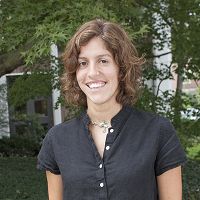Singha, 2011
Development of a summer field-based hydrogeology research experience for undergraduates
Singha, K. (2011)
AGU Annual Fall Conference Proceedings Cross-CZO
-
Boulder, Shale Hills, INVESTIGATOR
Abstract
A critical problem in motivating and training the next generation of environmental scientists is providing them with an integrated scientific experience that fosters a depth of understanding and helps them build a network of colleagues for their future. As the education part of an NSF-funded CAREER proposal, I have developed a three-week summer research experience for undergraduate students that links their classroom education with field campaigns aiming to make partial differential equations come “alive” in a practical, applied setting focused on hydrogeologic processes. This course has been offered to freshman- to junior-level undergraduate students from Penn State and also the three co-operating Historically Black Universities (HBUs)--Jackson State University, Fort Valley State University, and Elizabeth City State University—since 2009. Broad learning objectives include applying their knowledge of mathematics, science, and engineering to flow and transport processes in the field and communicating science effectively in poster and oral format.
In conjunction with ongoing research about solute transport, students collected field data in the Shale Hills Critical Zone Observatory in Central Pennsylvania, including slug and pumping tests, ground-penetrating radar, electrical resistivity imaging, wireline logging, and optical televiewers, among other instruments. Students conducted tracer tests, where conservative solutes are introduced into a local stream and monitored. Students also constructed numerical models using COMSOL Multiphysics, a research-grade code that can be used to model any physical system; with COMSOL, students create models without needing to be trained in computer coding. With guidance, students built basic models of fluid flow and transport to visualize how heterogeneity of hydraulic and transport properties or variations in forcing functions impact their results. The development of numerical models promoted confidence in predicting flow and transport in the field. For most of the students, this was their first opportunity to work in the field, and also their first time working with numerical models. The capstone of the class is a final poster presentation with a short oral introduction. Most students commented that this session, attended by graduate students and faculty at Penn State, was an inspiring experience. Feedback for the course has been uniformly positive, with one student noting on post-course feedback that “The best way of learning is by doing it”.
One benefit of CAREER funding is the ability to develop innovative pedagogy and bring it into the classroom with ease, due to financial support. In my case, the diverse backgrounds of the students in the course has required all of the students to work with students from other demographics, and that alone has been a valuable experience. One difficulty will be continuing this field program once the grant has ended; numerous students commented that they felt lucky to be part of the program during its 5-year existence and lamented that other students wouldn’t have the same opportunity. The students’ data and model runs will be published and used for my long-term research agenda in discriminating transport processes in situ, as well, making a positive feedback loop between research and education.
Citation
Singha, K. (2011): Development of a summer field-based hydrogeology research experience for undergraduates. AGU Annual Fall Conference Proceedings.
 This Paper/Book acknowledges NSF CZO grant support.
This Paper/Book acknowledges NSF CZO grant support.
Explore Further

